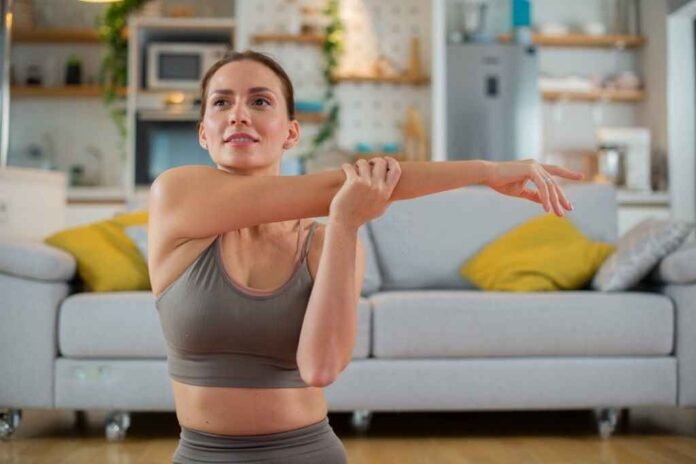Yoga, a centuries-old practice rooted in ancient Indian traditions, has gained immense popularity worldwide. It’s renowned for its myriad of benefits, from improving flexibility and strength to enhancing mental clarity and reducing stress. While many envision yoga as a collection pastime, there’s a lesser-acknowledged but equally effective variant – one-person yoga. In this comprehensive guide, we will delve deep into the world of one-person yoga, exploring its blessings, strategies, and the profound feel of concord it could carry to your lifestyle.
What is One Person Yoga?
One person yoga, regularly referred to as solo yoga or self-exercise, is a deeply non-public adventure in the direction of physical, mental, and emotional well-being. Unlike conventional institution yoga instructions, in which an instructor guides multiple individuals via a chain of poses, one-man or woman yoga centers around you and your specific wishes.
In this solo exercise, you end up with your very personal teacher, putting the tempo and deciding on the poses that resonate with your maximum. The intention isn’t just physical fitness; it is a holistic method of self-care and self-discovery.
The Benefits of Practicing Yoga Alone
1. Personalized Experience
One-character yoga allows you to tailor your practice to your particular desires and alternatives. Whether you need to be conscious of power, flexibility, or strain discount, you have the freedom to lay your habitual accordingly.
2. Deep Connection with Your Body
Practicing yoga on my own fosters a profound connection between your mind and body. You can concentrate on your frame’s signals and alter your exercise hence, minimizing the danger of damage.
3. Enhanced Concentration
Solo yoga eliminates distractions and enables you to fully immerse yourself in the present moment. This heightened concentration can lead to increased mental clarity and reduced stress.
4. Flexibility in Scheduling
With one-person yoga, you’re not bound by class schedules. You can practice on every occasion and any place that suits you, making it easier to incorporate into your daily habits.
5. Empowerment and Self-Confidence
Mastering yoga poses on your own can be distinctly empowering. As you attain milestones in your practice, your self-belief grows, each on and stale the mat.
Getting Started with One-Person Yoga
Embarking in your one-person yoga adventure is an interesting step in the direction of self-development and internal balance. Here’s a novice’s manual to help you get started:
1. Find Your Space
Begin by using designating a quiet, litter-unfastened space wherein you can exercise without interruptions. This area becomes your sanctuary for self-discovery.
2. Gather Essential Equipment
While one-person yoga requires minimal equipment, there are a few essentials you’ll need. A yoga mat is a must-have to provide cushioning and stability during your practice.
3. Set Clear Intentions
Before each session, take a second to set intentions for your practice. What do you want to achieve nowadays, both physically and mentally? Setting intentions helps you stay focused and mindful.
4. Warm-Up
Begin with a gentle warm-up to prepare your body for more challenging poses. Simple stretches and controlled breathing can help loosen your muscles and joints.
Essential Equipment for One-Person Yoga
As mentioned earlier, one-person yoga requires minimal equipment. Here are the essentials you should consider:
Yogas Mat: A good-quality yoga mat provides grip and cushioning, ensuring comfort and stability during your practice.
Yoga Blocks: These are optional but can be immensely helpful, especially for beginners. Yoga blocks provide support and assist in achieving proper alignment in certain poses.
Yogas Strap: Another optional accessory, a yoga strap, can aid in deepening stretches and improving flexibility.
Meditation Cushion: If you plan to incorporate meditation into your practice, a meditation cushion or bolster can enhance your comfort and focus.
One-Person Yoga Poses and Sequences
Now, let’s explore some fundamental yoga poses and sequences that are well-suited for one-person practice:
1. Mountain Pose (Tadasana)
Stand tall with your feet together, palms facing forward. This pose promotes balance and alignment while fostering a sense of groundedness.
2. Downward-Facing Dog (Adho Mukha Svanasana)
Begin on all fours, then lift your hips towards the ceiling, forming an inverted V shape. This pose stretches the entire body and strengthens the core.
3. Child’s Pose (Balasana)
Kneel on the mat, then sit back on your heels with your arms extended forward. Child’s pose is a resting position that promotes relaxation and releases tension in the back.
4. Warrior II (Virabhadrasana II)
Step your feet wide apart, extend your arms, and bend your front knee at a 90-degree angle. Warrior II builds strength in the legs and opens the hips.
5. Tree Pose (Vrksasana)
Balance on one leg, placing the sole of the other foot against your inner thigh. This pose enhances balance and concentration.
6. Sun Salutation (Surya Namaskar)
A sequence of 12 poses that flow together seamlessly, the Sun Salutation is an excellent way to energize your body and connect with your breath.
Creating a Sacred Space
Your practice space plays a crucial role in one-person yoga. It should be a mirrored image of your internal global, a place where you can find serenity and recognition. Here are a few guidelines for creating a sacred area:
Declutter: Remove any distractions or clutter from your chosen area. A clean and tidy space promotes mental clarity.
Personal Touch: Add personal elements such as candles, incense, or artwork that resonate with you and create a sense of tranquillity.
Natural Light: Whenever possible, choose a space with access to natural light. Sunlight can have a positive impact on your mood and energy.
Comfortable Seating: If you plan to incorporate meditation into your practice, ensure you have a comfortable cushion or chair for seated meditation.
Breathwork in One-Person Yoga
The breath is the bridge between the body and mind in yoga. Integrating breathwork into your practice can enhance its effectiveness and promote relaxation. Here’s a simple breathwork technique to get you started:
1. Deep Belly Breathing (Diaphragmatic Breathing)
- Sit or lie down comfortably with your hand on your abdomen.
- Inhale deeply through your nose, allowing your abdomen to rise as you fill your lungs.
- Exhale slowly through your mouth, feeling your abdomen fall.
- Continue this deep belly breathing for several minutes, focusing on the sensation of your breath.
Meditation and Mindfulness
Meditation is a natural complement to one-person yoga, helping you cultivate mindfulness and inner peace. Here’s a basic meditation practice to incorporate into your routine:
1. Mindfulness Meditation
- Find a comfortable seated position in your sacred space.
- Close your eyes and bring your attention to your breath.
- Observe every inhale and exhale without judgment.
- When your thoughts wander, gently redirect your consciousness to your breath.
- Start with a few minutes and progressively boom the period as you end up more snug with the practice.
Setting Intentions
Setting intentions before your one-character yoga exercise can infuse it with cause and meaning. Your intentions may be as easy or profound as you desire, and they manual your recognition at some point in the consultation. Here are some examples of intentions:
Gratitude: Express gratitude for your body’s abilities and the opportunity to practice yoga.
Healing: Focus on physical or emotional healing during your practice.
Stress Relief: Use your practice to release stress and tension.
Self-Love: Cultivate self-compassion and love for yourself.
Strength: Develop bodily and intellectual electricity through your practice.
The Journey of Self-Discovery
One-person yoga isn’t always pretty much bodily postures and versatility; it’s an adventure of self-discovery and private increase. As you hold your exercise, you can discover:
Increased Self-Awareness: You emerge as greater attuned to your body, feelings, and thoughts.
Inner Peace: The capability to discover peace within yourself, even amid lifestyle challenges.
Improved Stress Management: Better coping mechanisms for dealing with stress and anxiety.
Enhanced Patience: A greater capacity to remain patient and present in everyday life.
For in-depth guidance on yoga mat selection and care, check out this article on LifeMaintain.com.
Explore more yoga poses and sequences in our comprehensive Yoga Pose Guide.
Conclusion
One person yoga is a transformative adventure that empowers you to take rate of your bodily and intellectual well-being. With its personalized method and profound benefits, it is a practice that can deliver harmony and stability in your life.
As you embark on this course of self-discovery, remember that development may be sluggish, but the rewards are immeasurable. Through aware practice, purpose placing, and a dedication to your personal boom, one-person yoga can lead you to an area of greater peace, self-consciousness, and typical well-being.
So, roll out your yoga mat, breathe deeply, and take step one towards locating harmony within yourself via the practice of 1-man or woman yoga. Your journey awaits, and the opportunities are infinite.

